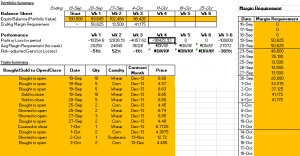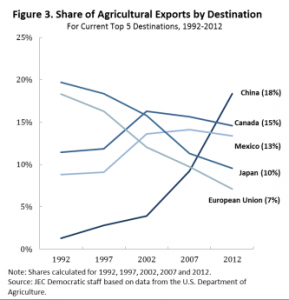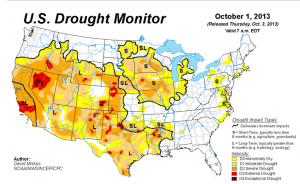Poor decisions in shorting wheat
Driven by the high demand of Asian countries caused by the floods in China, and also the bad weather in Argentina, one of the largest producers of agricultural crops, the wheat price has been soaring during the past week, ending at 6.865.
Buying corn— The lowest price in mind didn’t equal to the real bottom-line in the real world
The shutdown of US government this week partly influenced the commodity market. The limited information caused by the shutdown makes it more difficult to determine the reasons why there was a big fluctuation in price. The stock and production data yielded by the US government is always regarded as one of the most essential roles in leading the tendency of market. The missing sources will definitely raise a sense of nervousness in the market. Will the price of this week be the real bottom-line? Will buying corns at the end of this week become a smart decision? All I can do is just to wait!
A messy trading week, but still embracing some lessons learnt
1.To make long-run decision without distraction from the media
From the first week to the third week, I always tend to follow the market news to make my trading decisions. Sometimes, they’ll lead me to make wiser decisions and win me a small amount of money. But if there’s a 50/50 chance of winning money, there must be another 50/50 of losing money. It’s more sensible to make your own benchmark in determining what’s the best portfolio instead of lingering between what’s the media talking about and what’s the expertise thinking about. Making more “original” decisions based on the facts and data, even though they’ll turn out to be wrong afterwards. After several contract-buying, I came to realize that the effect of current news was always temporary. The small fluctuations day by day were just interludes in the annual price changing.
2.Demand and Supply—The timeless principle
It’s easy to figure out that the price will keep unstable if the demand and supply can’t balance with each other. The same story in the commodity market. The graph above illustrates that China has been the most important importer from US from 1992 to 2012, and China accounted for larger and larger share in US export. So it’s easy to understand why the flood in China recently has such an impact on US crop price. Asian nations with large populations to feed will not reduce their stockpiles unless they see inventories rising in top exporting countries such as the United States. “Higher grain stocks reflect the government’s priority of having a more-than-sufficient buffer to avoid any shortage and to run its welfare food programmes,” said N. R. Bhanumurthy, a professor at the National Institute of Public Finance and Policy in New Delhi.
From the supplier side, most parts of western US are undergoing drought to different extents. It drove the market volatile. If there’s any lack of supply in importing countries or any unpredictable over-demand in these countries, price will rise, especially when the inventory in exporting countries drop down.
How about next week?
I decide to trade from a more far-sighted view instead of highly-frequent buying-and-selling actions, though there’s only three weeks left. Corn price is at a relatively low level, I will find a better chance to sell my 13 units with various buying price. And for wheat, as the disasters in both China and US pass away, the price of wheat may tend to be stable again and retrieve to its previous level.
Vanilla Chen



